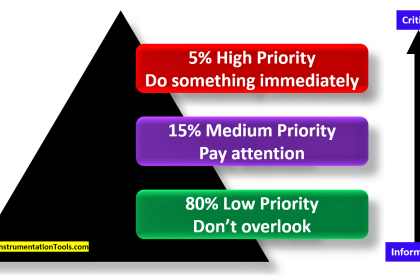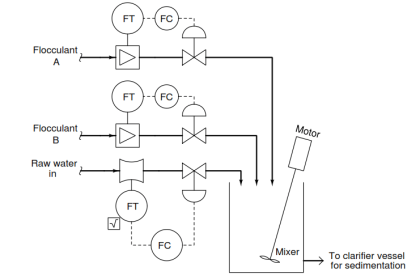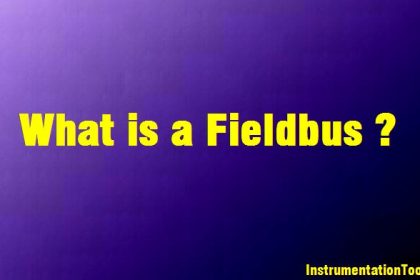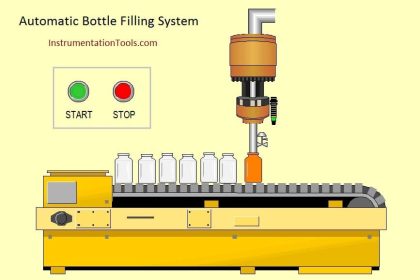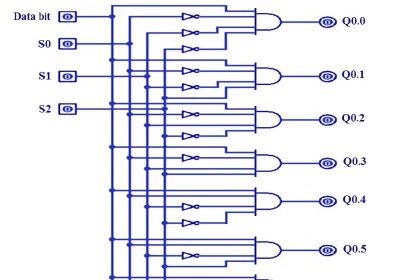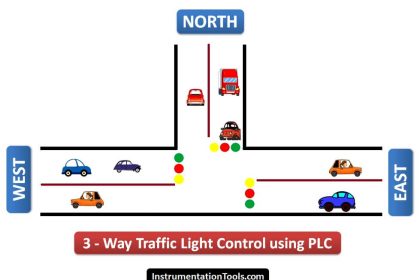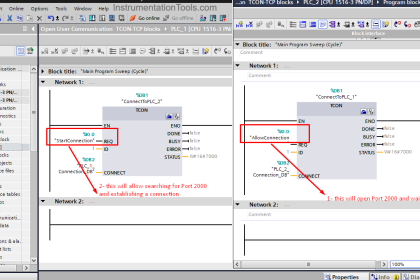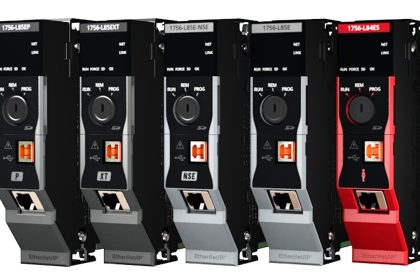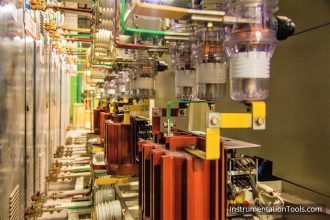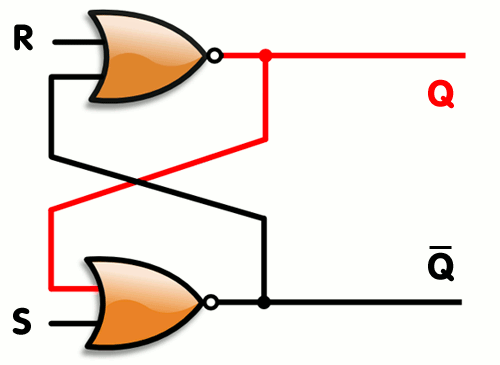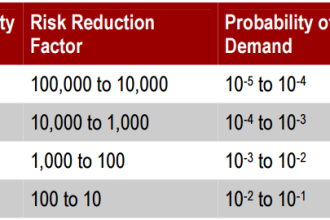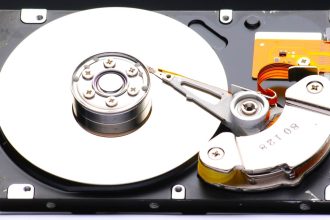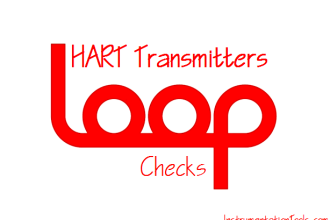Refer to the below industrial networking and wireless interview questions with answers.
Industrial Networking Questions
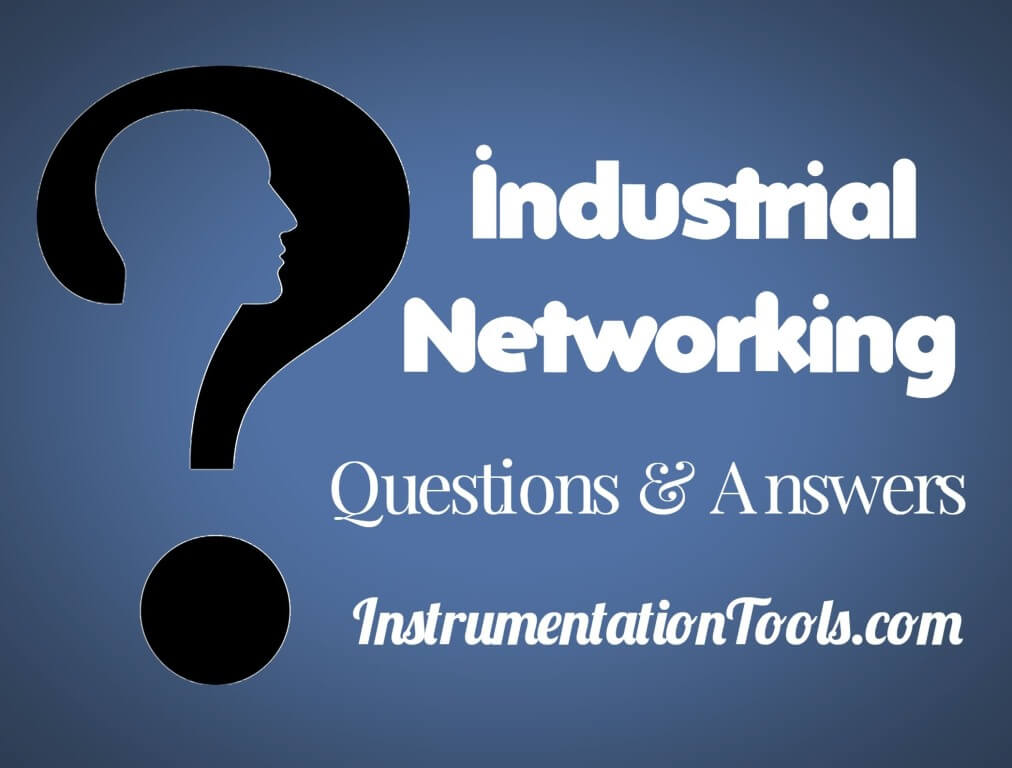
What are the components of a radio link?
- Antennas,
- Transmitter,
- Receivers,
- Antenna support structure,
- Cabling,
- Interface equipment.
Give the types of cables used in communication system
- Co-axial for all radio frequency
- Twisted pair for voice, data
- Power cables.
Name the modes of Radio modems
- Point to point,
- Point to multipoint
Mention the features of radio modem
- Transmit/receive radio channel frequency,
- host data rate and format,
- Radio channel data rate
What are the steps for implementing radio link?
- Carry out radio path profile
- calculate RF losses
- calculate affects of transmitter power
- Decide on requirement
- Choose cable and antenna
- purchase equipment
- Install equipment.
What is the magnitude of signal in Ethernet?
Voltages swing between 0 and -2.05 volts on coaxial cables or between -2.5 V to +2.5 V on twisted pair.
What are the states that node in Ethernet using CSMA/CD access control?
- Idle, or listen
- Transmit
- Contention
What is 5-4-3-2 rule in Ethernet?
It is a rule to find the maximum transmission path in a network.
It stands for 5 segments-4 repeaters-3coax segments-2 link segments.
What are the delays in 100 base T network?
Repeater delay, cable delay, NIC delays and safety factor.
The sum of these delays must be less than 2.56 microseconds for healthy transmission.
What is need for partitioning an industrial network?
Industrial network require fast response and real-time operation, while Ethernet does not require same response.
Security is another concern where industrial network is split off from commercial networks. Industrial network are also partitioned into sub-networks for these reasons.
Name some connectors used for industrial Ethernet.
- Screw type N connectors and
- D type connectors,
- RJ -45,
- DB- type connectors,
- M12 connectors
Mention some of the problems and faults in Industrial Ethernet.
Problems attributed to either cabling, the LAN devices, the NIC or the protocol stack configuration on the hosts.
Mention the different bands of radio spectrum.
Ultra-high frequency (mid and low); Very high frequency (high, mid, low); High frequency
Data Network Fundamental Questions
Define networks?
A network is a set of devices (referred to as nodes) connected by media links.
A node can be a computer, printer, or any other device capable of sending or/receiving data generated by other nodded on the network. The links connecting the devices are called as communication channels.
Give some applications of networks?
- Marketing and sales,
- Financial services,
- Manufacturing,
- Electronic messaging,
- Directory services,
- Information services,
- Electronic data interchange,
- Teleconferencing,
- Cellular telephone,
- Cable television.
Define line configuration?
Line configuration refers to the way two or more communication devices attach to a link.
A link is the physical communication pathway that transfers data from one device to another.
Define topology? What are the different types of topology?
Topology refers to the way a network is laid out, either physically or logically. Two or more devices connect to a link; two or more links forms a topology.
The different types of topology are,
- Mesh,
- Star,
- Tree,
- Bus,
- Ring
Define peer-to-peer and primary-secondary transmissions?
Peer-to-peer is one where the devices share the link equally.
Primary-secondary is one where one device controls traffic and the others must transmit through it.
What is the difference between active hub and passive hub?
Active hub:-
The central hub in the tree is an active hub. An active hub contains a repeater, which is hardware device that regenerates the received bit patterns before sending them out.
Passive hub:-
A passive hub provides a simple physical connection between the attached devices.
Define transmission modes? What are the types of transmission modes?
Transmission mode is used to define the direction of flow between two linked devices. There are three types of transmission modes;
Simplex:-
The communication is unidirectional, as on a one-way street. Only one of the two stations on link can transmit; the other can only receive.
Half-duplex:-
Each station can transmit and receive but not at the same time. When one device is sending the other can only receive, and vice versa.
Full-Duplex:-
Both stations can transmit and receive simultaneously.
What are the different categories of n/ws?
LAN (Local Area Network):-
A LAN is usually privately owned and links the devices in a single office, building or campus. LANs are designed to allow resources to be shared between personal computers are workstations.
MAN (Metropolitan Area Network):-
A MAN is designed to extend over an entire city. It may be a single n/w such as a cable tv n/w, or it may be means of connecting a number of LANs into a larger network so that resources may be shared LAN-to-LAN as well device-to-device.
WAN (Wide Area Network):-
WAN provides long distance transmission of data, voice, image and video information over large geographical areas that may comprise a country, or even the whole world.
What is an open system model?
A open system model is a model that allows any two different systems to communicated regardless of their underlying architecture.
It is a layered frame work for the design of network systems that allows for communication across all types of computer systems. It is built of seven ordered layers. They are,
- Layer1 – physical layer,
- Layer2 – data link layer,
- Layer3- network layer,
- Layer4 – transport layer,
- Layer5- session layer,
- Layer6 – presentation layer,
- Layer7 – application layer
What is the mechanism of ENQ/ACK?
The initiator first transmits a frame called an enquiry asking if the receiver is available to receive data.
The receiver must answer either with an acknowledgement frame if it is ready to receive with negative acknowledgement.
Define flow control?
Flow control refers to a set of procedures used to restrict the amount of data the sender can send before waiting for acknowledgment.
What are the two methods that control the flow of data across communication links?
- stop and wait,
- sliding window
What is the mechanism of stop-and-wait flow control?
In the stop and wait method of flow control sender sends one frame and waits for an acknowledgement before sending the next frame.
What is the mechanism of sliding window flow control?
In the sliding window flow control; the sending of data is constrained by imaginary window that expands and contracts according to the acknowledgement received by the sender.
What does the term error control mean in the data link layer?
Error control in the data link layer is based on the automatic repeat request which means re-transmission of data in three cases: damaged frame lost frame, lost acknowledgment.
What is the mechanism of poll/select?
A poll is sent to the secondary device by the primary to determine if the secondary has to send. Thesecondary can respond by sending a acknowledgement or a data frame.
A select frame is sent from the primary device to the secondary device to tell the secondary to prepare toreceive data. The secondary responds with an ACK or a NAK.
Define protocol.
A protocol in data communications is the set of rules used to implement one or more layers of the OSI model.
What are the two types of data link protocol?
- Asynchronous protocol,
- Synchronous protocol.
What are the disadvantages of asynchronous transmission?
- speed of transmission is less,
- It leaves unpredictable gaps of time between each character.
- addition of start, stop bits & insertion of gaps into the bit stream make asynchronous transmission slower.
What are the two types of synchronous protocol and explain it?
- character oriented protocol,
- bit-oriented protocol
What is data transparency?
Data transparency in data communication means we should be able to send any combination of bits as data. The combination of bits as data is not confused with the control information.
Define BSC
Binary synchronous communication is a well-known character oriented protocol.
BSC operates in half-duplex mode using stop and wait ARQ in a point to –point or multipoint configuration.
What is bit stuffing?
Bit stuffing is the process of adding one extra ‘0’ whenever there are five consecutive ‘1’s in the data.
So that the receiver doesn’t mistake the data for a flag.
What do you mean by HDLC?
High-level data link control is a bit oriented data link designed to support both half-duplex and full duplex communication over point-to point and multi point links.
How do the three HDLC frame types differ from one another?
- I-frame -for data transmission and control,
- S-frame -control,
- U-frame –for control and management
What are the types of modes in HDLC?
- normal response mode(NRM),
- asynchronous response mode(ARM),
- Asynchronous balanced mode(ABM)
What is piggy bagging?
Piggy backing means combining data to be sent and acknowledgement of the frame received in one single frame.
Name the four types of s-frames?
- receive ready(RR),
- receive not ready(RNR),
- reject(REJ),
- selective reject(SREJ)
Name the five categories of U-frame.
- Mode setting,
- Unnumbered exchanging,
- Disconnection,
- Initiation,
- Miscellaneous
Inter-Networking Questions
What is the function of repeaters?
A repeater or regenerators is an electronic device that operates on only physical layer of the OSI model.
A repeater installed on a link receives the signal before it becomes too weak or corrupted. Regenerates the original bit pattern and puts the refreshed copy back onto link.
What is the function of bridges?
It is operate on the physical layer and data link layers of the OSI model. Bridges can divide a large network into the small segments. They can also relay frames between two originally separate LANs.
Bridges contain logic that filters traffic, thus making them useful for controlling congestion and isolating problem links.
What is the function of routers?
These have access to network layer address and contain software that enables them to determine which of several possible paths between those addresses in the best for a particular transmission.
Routers operate in the physical, data link and network layers of the OSI model.
What are gateways?
A gateway is a protocol converter.
A gateway can accept a packet formatted for one protocol and convert into a packet formatted for another protocol before forwarding it.
What is the function of gateway?
A gateway potentially operates in all seven layers of the OSI model. A gateway is a protocol converter.
A gateway by itself can accept a packet formatted for one protocol & convert it to a pocket formatted for another protocol before forwarding it.
What is network?
A network is a set of devices often referred to as nodes, connected by media link.
A node can be a computer, printer or any device capable of sending and or receiving data generated by other nodes on the network. The links connecting the devices are often called communication channels.
What is internetwork?
When two are networks are connected they become an internetwork or internet. Individual network are joined into internetworks by the use of internetworking devices.
These include routers and gateways. The word internet means an interconnection of networks and is world-wide network.
What is adaptive routing?
It involves a method in which router may select a new route for each packet in response to changes in condition and topology of the networks.
What is non adaptive routing?
Once the path way towards a destination has been selected, the router sends all the packets to that destination along that one route.
So the routing destinations are not made based on the condition or topology of the network.
What is distance vector routing?
Each router periodically shares its knowledge about the entire network with its neighbors.
Periodically sends its knowledge about the network only to those routers to which it has direct links. Information sharing occurs.
What is link routing?
In link state routing each router shares its knowledge of its neighborhood with every other router in their internetwork.
Each router sends out information about the neighbors when there is a change.
What is flooding?
Each router sends the information to every other router on the internet working not just to its neighbors.
It does so by a process called flooding.Flooding means that a router sends its information to all of its neighbors.
What are the main elements of distance vector routing?
- shared information,
- routing table,
- updating data
What are the types of bridges?
- simple bridge
- multipoint bridge
- transparent bridge
What is spanning Tree Bridge?
Two LANs may be connected by more than one bridge. In this case, if the bridges are transparent bridges, they may create a loop, which means a packet may be going round, from one LAN to another and back again to the first LAN.
To avoid this situation bridges today use what is called the spanning tree algorithm.
What is Fast Ethernet?
It operates at 100 Mbps. With new applications such as computer aided design, image processing and real time audio and video being implemented on LANs.
What is Gigabit Ethernet?
It has a data rate of 1000Mbps. It is used in optical fiber, although the protocol does not eliminate the use of twisted pair cables.
What are the types of Ethernet?
10 BASE 5: Thick Ethernet; 10 BASE 2: Thin Ethernet.; 10 BASE T: Twisted pair Ethernet Fast Ethernet, Gigabit Ethernet, Switched Ethernet.
What are the types of base band Ethernet?
- 10 BASE 5,
- 10 BASE 2,
- 10 BASE T,
- 1 BASE 5,
- 100 BASE T
What are the types of Topology used in network?
- Mesh Topology ;
- Star Topology ;
- Bus Topology ;
- Ring Topology
What are the advantages and disadvantages of Star topology?
- Advantages- less expensive, easy to install and configure
- Disadvantages – Amount of cabling and number of I/O port required.
What are the advantages and disadvantages of Mesh topology?
- Advantages- eliminating traffic problem, robust, privacy or security, fault identification and fault isolation
- Disadvantages – hardware is required
What are the advantages a of Tree topology?
Advantages- Many devices to be attached to a single central hub, Allows the networks to isolate
What is routing table?
A routing table has columns for at least three types of information: the network ID and ID of the next router. The network ID is the final destination of the packet.
The cost is the number of hops a packet must make packet to get there. And the next router is the router is the router to which a packet must be delivered on its way to a particular destination.
If you liked this article, then please subscribe to our YouTube Channel for PLC and SCADA video tutorials.
You can also follow us on Facebook and Twitter to receive daily updates.
